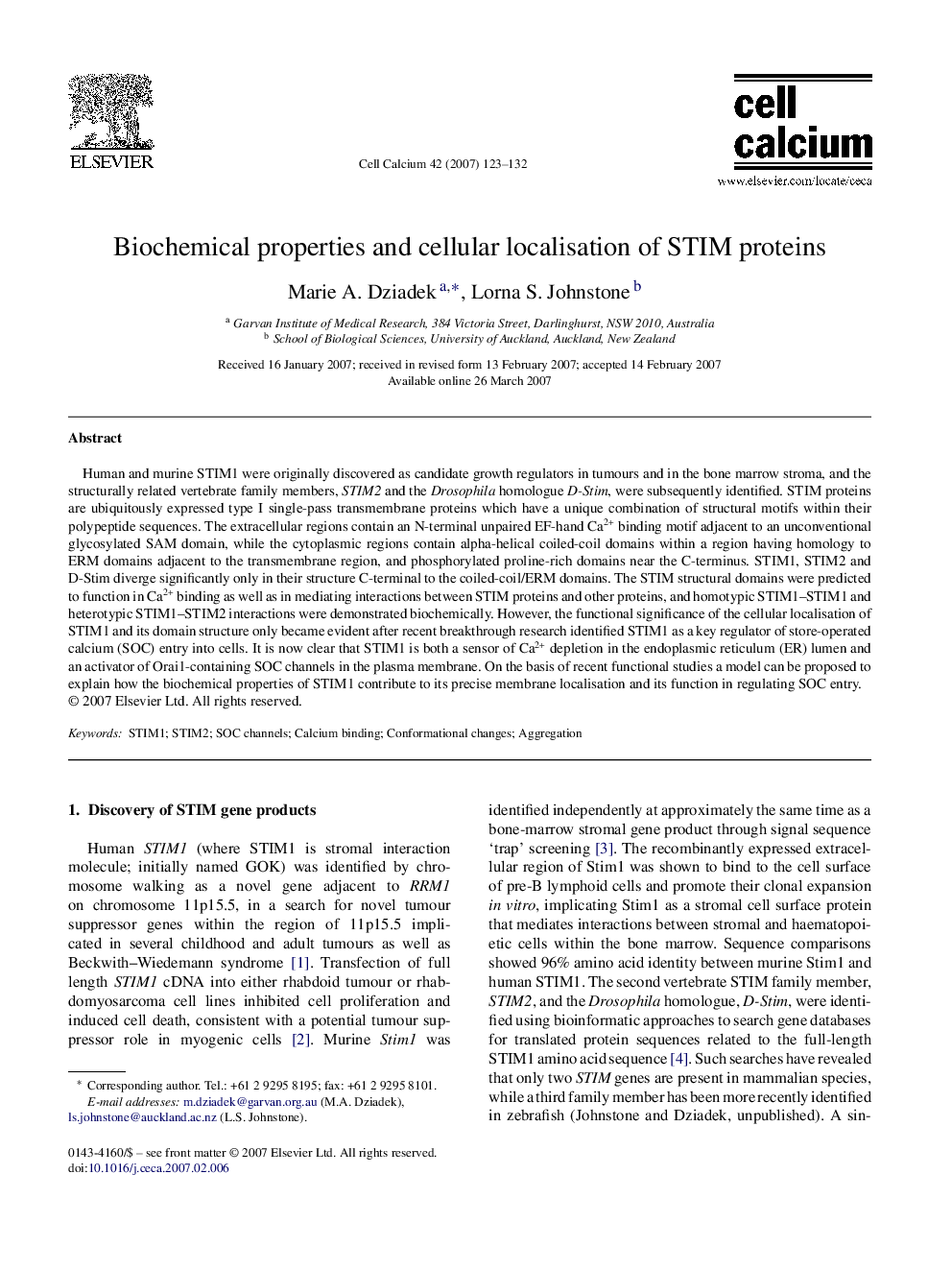| کد مقاله | کد نشریه | سال انتشار | مقاله انگلیسی | نسخه تمام متن |
|---|---|---|---|---|
| 2166579 | 1091867 | 2007 | 10 صفحه PDF | دانلود رایگان |

Human and murine STIM1 were originally discovered as candidate growth regulators in tumours and in the bone marrow stroma, and the structurally related vertebrate family members, STIM2 and the Drosophila homologue D-Stim, were subsequently identified. STIM proteins are ubiquitously expressed type I single-pass transmembrane proteins which have a unique combination of structural motifs within their polypeptide sequences. The extracellular regions contain an N-terminal unpaired EF-hand Ca2+ binding motif adjacent to an unconventional glycosylated SAM domain, while the cytoplasmic regions contain alpha-helical coiled-coil domains within a region having homology to ERM domains adjacent to the transmembrane region, and phosphorylated proline-rich domains near the C-terminus. STIM1, STIM2 and D-Stim diverge significantly only in their structure C-terminal to the coiled-coil/ERM domains. The STIM structural domains were predicted to function in Ca2+ binding as well as in mediating interactions between STIM proteins and other proteins, and homotypic STIM1–STIM1 and heterotypic STIM1–STIM2 interactions were demonstrated biochemically. However, the functional significance of the cellular localisation of STIM1 and its domain structure only became evident after recent breakthrough research identified STIM1 as a key regulator of store-operated calcium (SOC) entry into cells. It is now clear that STIM1 is both a sensor of Ca2+ depletion in the endoplasmic reticulum (ER) lumen and an activator of Orai1-containing SOC channels in the plasma membrane. On the basis of recent functional studies a model can be proposed to explain how the biochemical properties of STIM1 contribute to its precise membrane localisation and its function in regulating SOC entry.
Journal: Cell Calcium - Volume 42, Issue 2, August 2007, Pages 123–132